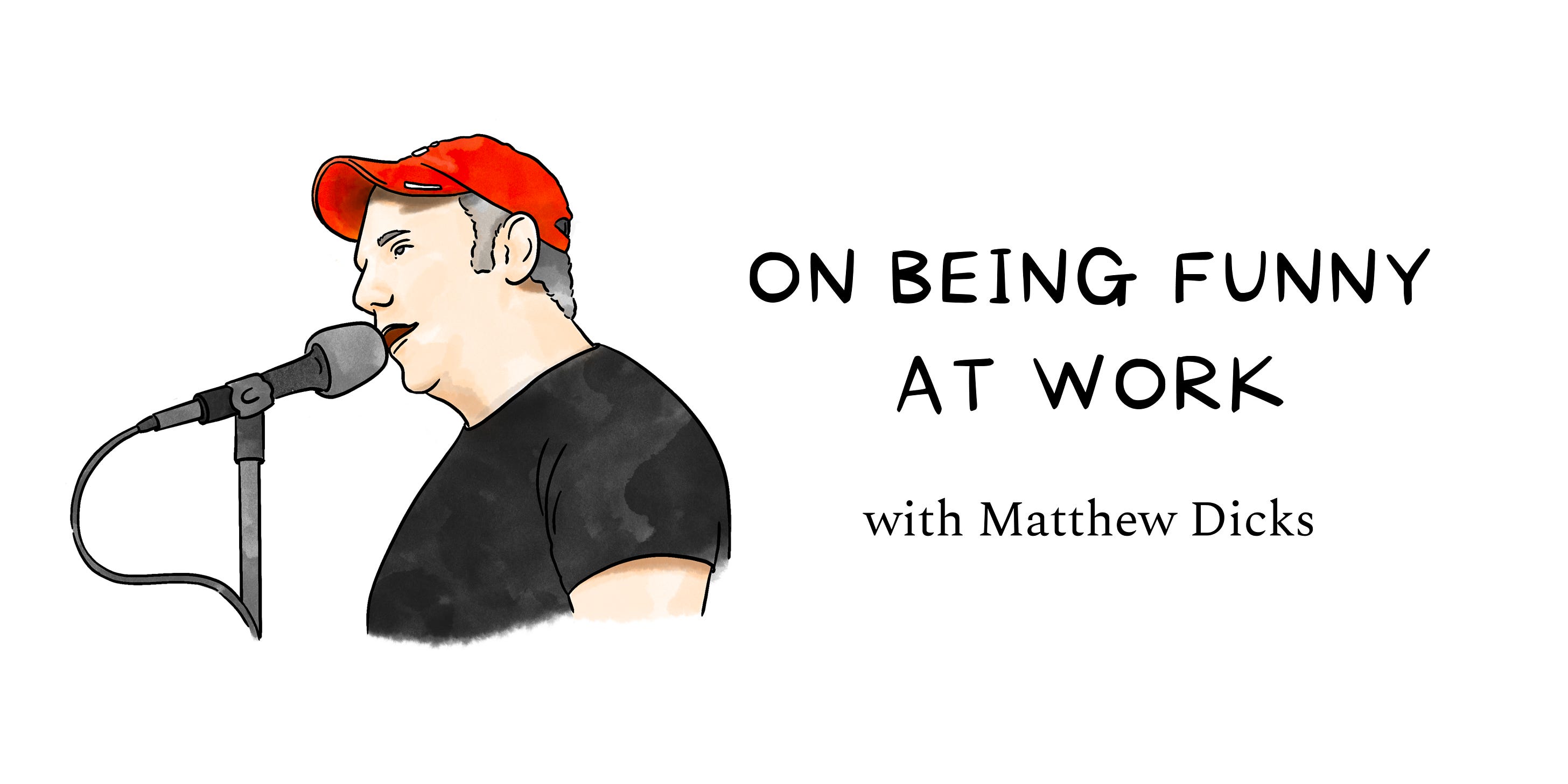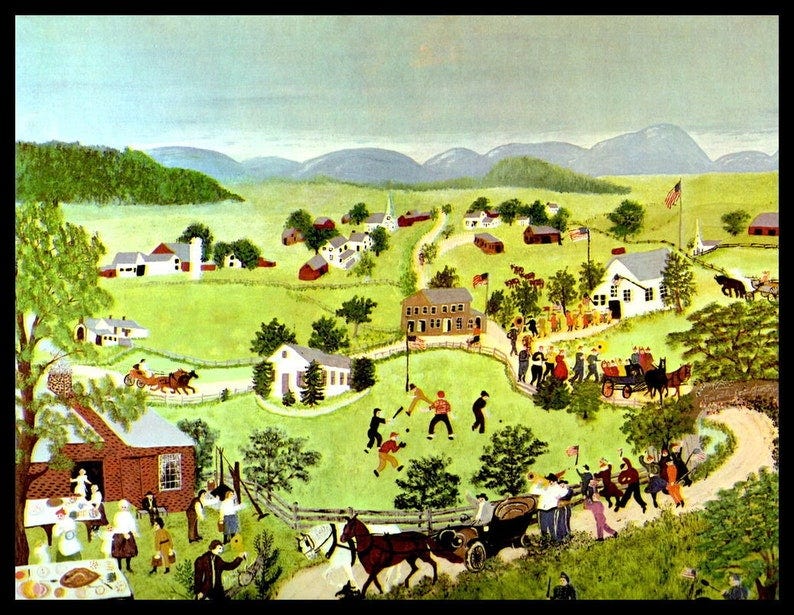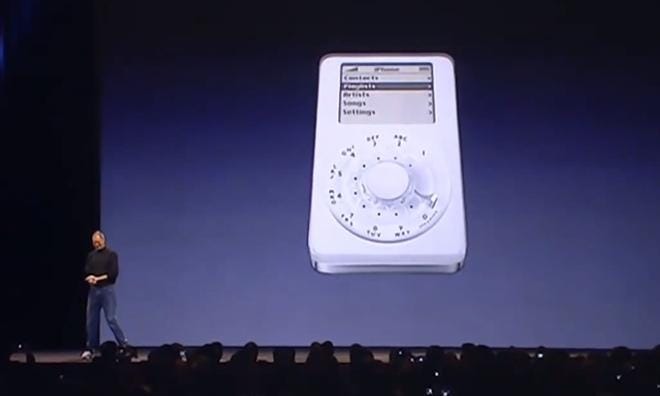👋 Hey, I’m Lenny, and welcome to a 🔒 subscriber-only edition 🔒 of my weekly newsletter. Each week I tackle reader questions about building product, driving growth, and accelerating your career. For more: Lenny and Friends Summit | Hire your next product leader | Top Maven courses | Lennybot | Podcast | Swag Reminder: If you live in the U.S., don’t forget to vote today! Matthew Dicks is the author of the single most actionable and practical book I’ve ever read on the skill of storytelling—Storyworthy. He’s also a record 61-time Moth StorySLAM champion, 10-time GrandSLAM champion, and beloved past podcast guest. He just published a new book, Stories Sell: Storyworthy Strategies to Grow Your Business and Brand, which teaches you how to use the power of storytelling in business. My favorite part of Matt’s new book is very practical and actionable advice about how to be funnier. Who doesn’t want to be funnier? So I asked Matt to share his favorite advice here in the newsletter, and he generously agreed to cover seven of his favorite techniques—including tons of examples, simple frameworks, and ideas you can put into practice immediately. I hope this post makes your work life just a little bit more fun. Matthew Dicks is an internationally bestselling author and award-winning slam storyteller with a record-breaking sixty-one victories at the Moth StorySLAM competition and ten victories at the GrandSLAM. Matt teaches storytelling and public speaking to individuals, corporations, nonprofits, universities, and schools around the world. His clients have included Amazon, Google, Microsoft, Salesforce, The World Bank, Harvard University, and the FBI. I have good news. Humor can be taught. It’s not some natural talent or gift offered by the gods. It’s a learned skill, generally mastered by four types of people:
That means that you too can be funny. And when you’re able to make people laugh, they like you more, you set yourself apart, and you become a more effective leader. The life-changing power of being funny (even when you’re a meathead)When I was 32 years old, I went to an art museum for the first time with a woman I loved who did not love or even like me. But she loved art, so I didn’t tell her that I had never set foot in an art museum before. I was hoping she might someday fall in love with the person I wanted to be instead of the meathead I was at the time. I was standing in a gallery that was supposed to be filled with “Grandma Moses” paintings, but I couldn’t find a single one. I was standing in front of a beautiful painting of a little town, falling in love with fine art for the first time, but still in search of a single “Grandma Moses” painting. Then it occurred to me: “Grandma Moses” paintings are not paintings of Grandma Moses. They’re by her. Again, I was 32 years old—a college graduate teaching elementary school and writing my first novel—and I thought paintings were of the painter of the painting. Again, I was a meathead. I was married to this woman for three years before I finally told her the truth about that day in the museum: “It was my first museum ever.” “I didn’t know what I was doing?” “You kept saying the word docent, but I couldn’t figure out what that word meant.” “I was searching for Grandma Moses paintings of Grandma Moses.” “Can you believe it?” My wife’s response: She laughed. That was my goal. It’s always been my goal. It’s this kind of humor that first attracted her to me—and keeps her attracted to me even now. You probably like me a little more, too, after reading that story. In fact, when Elysha was asked (in my presence) when she first started falling in love with me, she said it all began during a dinner at Chili’s—our first meal together. “Ask Matt a question, and he tells you a story. He told lots of stories that night, and I never stopped laughing. I realized that he was unlike anyone I had met before. And I knew that if I married him, I’d never be bored.” That’s the power of humor. And if you’re not naturally funny, you can learn to be funny and get that power for yourself. Humor is simply deploying strategies to make other people laugh. Strategies. Just like the ones you learned to grow your business, drive a car, and avoid Phil while at work. This is profoundly good news in the business world because the benefits of making people laugh are enormous. In addition to getting people to like you, humor is a highly effective means of holding an audience’s attention, convincing people that you can be trusted, and ensuring that you are remembered. It’s also perceived as a sign of intelligence, so making people laugh will cause them to view you as smart, even if you’re a meathead. Forbes recently identified “a sense of humor” as the fourth most important quality in a leader. (Even better, the business world—with the exception of advertising and the Berkshire Hathaway annual shareholders meeting—is often devoid of humor, which means if you are funny or even mildly amusing, you will have a significant advantage over the competition.) There are a kabillion reasons why you should be funny. Here’s one: Making someone laugh alters a person’s brain chemistry. Laughing swaps the cortisol in our bloodstream with dopamine, oxytocin, and endorphins—three powerful chemicals that every leader and public speaker should want in their audience’s brains. Why?
Other health benefits from laughter include stress relief, reduced anxiety, a sense of safety, and improved mood. So how can you be funny?Let’s start by understanding humor better. Many things can be said about how to make a person laugh, but it essentially boils down to one thing: surprise. Humor is the strategic assembly of specific words, spoken in a specific way, to create a surprise that produces a smile or a laugh. It’s the same basic principle behind a jump scare in a horror movie, the weeping you did at the end of Titanic, or your spontaneous cheering at the end of Jaws. It’s surprising when Christopher Walken asks for more cowbell in the classic SNL skit (after Will Ferrell’s character has already pounded the hell out of the cowbell). In any normal situation, the Walken character would say, “Too much cowbell!” or “Ditch the cowbell!” so when he asks for more, it’s surprising and, therefore, funny. It’s the way he asks for the cowbell, too, because it’s the words we choose and the way we say them that produce a laugh. This is why this post would be infinitely funnier if I were speaking the words to you instead of your reading them yourself. It’s a hell of a lot easier to be funny aloud than on the page. When Wanda Sykes tells the audience: “I got a nice gut going on. Yeah, Esther is out of control. Yes, I call her Esther. When I was in my 40s, I got this little fat roll. I just named it. That was Esther. And now Esther is spreading. Esther is roaming around my body there. Esther’s all creeping around my back like, ‘Hmm, what’s back here? Let’s see what’s back here.’ ” … it’s surprising for lots of reasons. First, she’s acknowledging her gut, which isn’t something people typically do, at least not publicly. She also uses specific language. “I got a nice gut going on” is funny. We might say, “I have a nice vacation going on” or “I have a nice career going on” or “I’ve got a great pot of stew going on,” but she applies these words to her gut. Surprise. She’s also named her gut—Esther. That’s surprising. Some weirdos name their cars and even their houses, but their belly fat? That’s surprising. Then she personifies her gut in the final sentence by giving Esther voice, intention, and even locomotion. It’s all something we have never heard before in terms of content, language, and characterization. It’s funny because it surprises us. If you heard her speak these words aloud, it would be even funnier. How do people like Wanda Sykes and Christopher Walken produce comedic surprises? There are many ways. I currently teach 27 different strategies, but I’m always adding to the list. Whenever I laugh, I ask myself how the person speaking made me laugh. If the strategy is new, I reproduce it and teach it to others. As long as people are making people laugh, new strategies are being invented all the time. Seven strategies to be funny in business1. NostalgiaWhen I was a kid, my family owned a VCR that weighed about 750 pounds and was attached to the remote control by a cord as thick as a toddler’s forearm. When I wasn’t using it as a remote, it doubled as a trip wire that I would use to knock my brother, Jeremy, on his ass when he ran through the living room. We watched movies by inserting film encased in plastic shells into that machine, sitting beside decorative ashtrays made in middle school art class, eating gluten-packed Vienna Fingers, and drinking Capri-Sun on an orange shag carpet that literally needed to be raked once per week. That is nostalgia. If you remembered any of this, it likely made you smile. Nostalgia produces comedic surprise because it startles us into realizing how quickly the world has changed. This strategy is useful in business because we often reference the past when discussing our products and services. It’s a good idea to show clients and customers how our products, platforms, technology, sectors, or company have evolved over time, and that is when we can deploy nostalgia.
Even when nostalgia does not produce a laugh, it is still informative. It doesn’t sound like a failed joke; it’s simply relevant historical information. But when done well, it’s often hilarious.
2. ExaggerationExaggeration is only funny when it’s clear that you are exaggerating to produce a laugh. Exaggerating in the hope of getting people to believe it is true is called lying. For example, my VCR did not weigh 750 pounds, and the remote control cord wasn’t as thick as a toddler’s forearm, but that exaggeration produces a laugh because the numbers and sizes are so outrageous that the audience can only assume it’s an exaggeration. I also exaggerated when I said there are a kabillion reasons to be funny. I also used the word “kabillion,” which was also surprising. “Kabillion” also starts with a K, which oddly increases its chances of being funny. Words beginning with a hard K tend to be funnier than other words, probably because that sound is the most surprising of all sounds. It punches us in the face. Steve Jobs used a visual exaggeration in his 2007 iPhone launch when he showed an image of the new iPhone on the screen: a janky-looking iPod with a kitchen timer. Everyone knew that it wasn’t real but a silly exaggeration of what they all wanted to see. The result: a big laugh. Dopamine. Oxytocin. Endorphins. Brains primed for his message. Other examples: The Snickers “You’re not you when you’re hungry” campaign: These commercials exaggerate what a person feels like when they are hungry, before a Snickers bar returns them to their former self.
All exaggerations of what it really feels like to be hungry. Old Spice commercials featuring Isaiah Mustafa: This ad features a series of exaggerated scenarios designed to make you laugh while underscoring the effectiveness of Old Spice deodorant, thus launching a dusty old brand into the modern world. 3. One of these things is not like the otherSesame Street used to have a segment called “One of these things is not like the other.” They would show three objects, and one would not fit. It was designed to teach categorization to children. But comedians use this all the time. My favorite example of this comes from my favorite storyteller, Steve Zimmer. After his family isn’t invited to the neighborhood Hawaiian luau, they have their own barbecue the next week, featuring canned pineapples, ham, and despair. Two things are in the same category, and then a third that rightly applies to the situation but is as far away from the other two as possible. My daughter, Clara, is brilliant, keenly observant, and the loudest human being on earth. My son, Charlie, is a fantastic musician, a surprisingly adept catcher, and thinks he lives in a restaurant where all bowls and plates will be cleared and cleaned by some mythical, unseen busboy after he’s done eating. This strategy is useful in business because we often describe products, services, and the like. We can do so while also being funny: Our meal kits produce efficiently cooked, incredibly delicious meals that—if you’re sneaky enough to hide the evidence of the meal kit in your neighbor’s garbage—can fool your partner into believing you made dinner from scratch. Or… We’ve added a new feature to our platform that will simplify workflows, shorten the sales cycle, and bore your family to death when you tell them about it tonight. Now that I’ve highlighted this strategy, you’ll hear it all the time. It’s the bread and butter of stand-up comedy, but it’s also an easily deployed strategy in the business world. 4. DefinitionsImagine that you have a colander. It’s a magical colander because it’s capable of sifting anything—sand, Key lime pie, or your mother-in-law’s passive-aggressive sarcasm. See what I did there?... Subscribe to Lenny's Newsletter to unlock the rest.Become a paying subscriber of Lenny's Newsletter to get access to this post and other subscriber-only content. A subscription gets you:
|
Search thousands of free JavaScript snippets that you can quickly copy and paste into your web pages. Get free JavaScript tutorials, references, code, menus, calendars, popup windows, games, and much more.
On being funny at work
Subscribe to:
Post Comments (Atom)
Top 3 UX Design Articles of 2024 to Remember
Based on most subscriptions ͏ ͏ ͏ ͏ ͏ ͏ ͏ ͏ ͏ ͏ ͏ ͏ ͏ ͏ ͏ ͏ ...
-
code.gs // 1. Enter sheet name where data is to be written below var SHEET_NAME = "Sheet1" ; // 2. Run > setup // // 3....



No comments:
Post a Comment